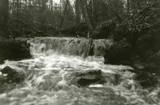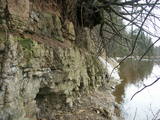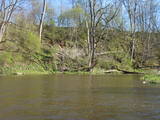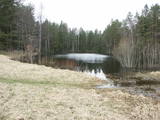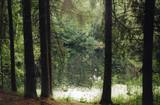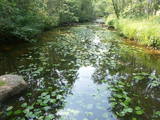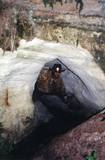| Нo | Название | Описание |
|---|---|---|
|
Here we find a set of canyon-type gullies among layers of dolomite. There are impressive outcrops and small waterfalls in the little river’s bed.
|
||
|
This is a unique geological object of paleontological importance. Up to four metres high, the cliff has yielded up fossils of ancient invertebrates and fish.
|
||
|
Small sandstone outcrops on the shores of the Ciecere River. Fish fossils have been found here.
|
||
|
This is a part of Latvia in which various manifestations related to layers of earth made up of water-soluble lime can be found. The most unusual elements here are Lake Vecezers and Lake Linezers. The water of the latter lake has flowed underground several times over the last few decades, with the remaining lake hole as much as nine metres deep. No one can fully explain how this happens. A tourist trail encircles Lake Linezers.
|
||
|
Another area where the manifestations water-soluble lime in the earth can be found. As the lime dissolves, there are empty areas underground which eventually collapse. To the East of Skaistkalne is a leisure area where dry and full holes of various sizes can be found.
|
||
|
One of the richest sources of sulphurous water in Latvia.
|
||
|
Памятник природы - охраняемые дендрологические насаждения «Парк Варкавас» - расположен в Упмальской волости, и его площадь составляет 2,7 га, является охраняемым с 2001 года; территорией управляет Варкавский областной совет. Парк был разбит в конце 19-го века, судя по самым большим дубам (приблизительно 200-летним), остальные насаждения были проведены в конце 19-го века. В парке растут местные сорта кустарников и деревьев - клены, ясени, ели, осины, дубы, нежная ива, липы, вязы, лещина, бересклет европейский, черемуха и др., а также более 10 экзотических видов деревьев и кустарников, наиболее значимые из которых - клен остролистный, клен сахарный, чубушник пушистый, душистая осина, серебряная ива, Венгерская сирень, Крымская липа, липа широколиственная. |
||
|
This territory protects a lime outcrop found on the shores of the lower reaches of the Zaņa River. There is a path for active hikers which begins at the Zaņa mill (1864, rebuilt 1890, shut down 1960). The path weaves its way along the steep shores of the little river, heading toward its mouth.
|
||
|
Viens no raksturīgiem karsta parādību piemēriem, kur nelielas upītes - strauta ūdeņi pazūd vairākos ūdensrijējos un pēc kāda brīža - iespaidīgās Lauces ielejas krastos iznāk spēcīgu avotu veidā, tālāk ieplūzdami Lauces upē. Šī parādība dinamikā vislabāk ir novērojama pēc lietavām vai pavasaros sniega kušanas laikā un kādu brīdi pēc tam. |
||
|
Vairāki dažus metrus augsti smilšakmens atsegumi, kas izveidojušies Stiglavas (Stiglovas) strauta gravas nogāzēs. Kaut arī teritorija tiek popularizēta kā tūrisma objekts, tajā nav īpašu šim nolūkam paredzētu labiekārtojumu. Teritorijas apmeklētāji bojā smilšakmens atsegumus, kas ir aizsargājami biotopi!
|
